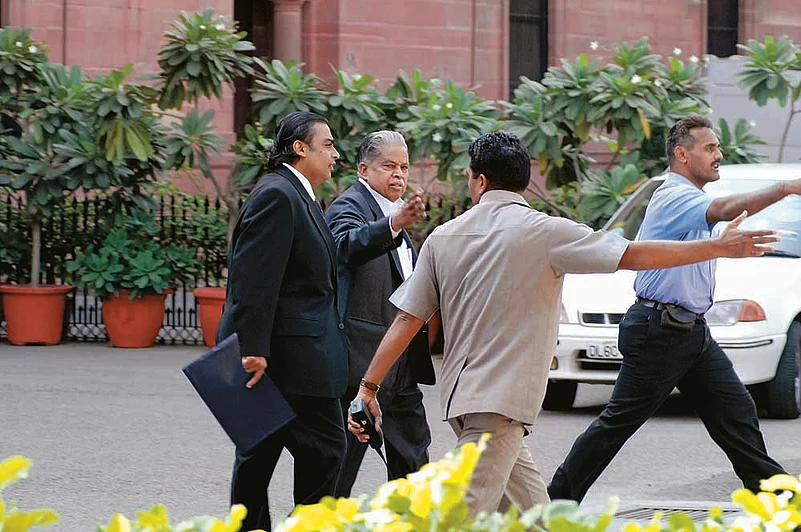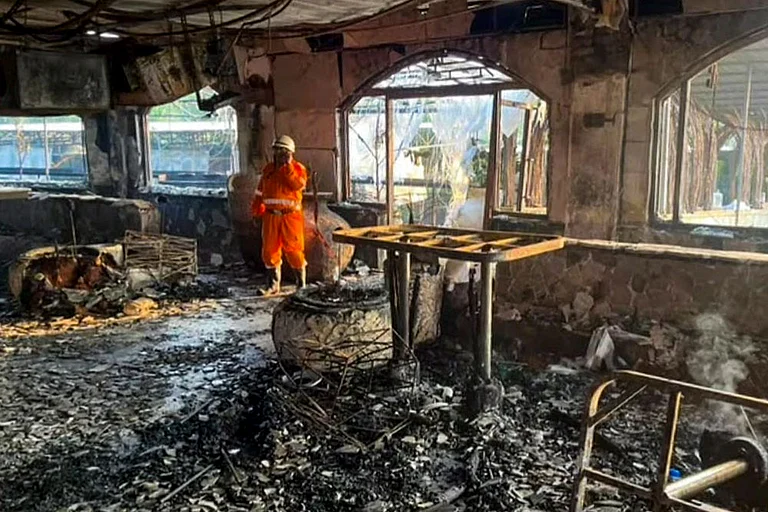The Centre has muscled in to have its way on an issue likely to affect millions. Despite high-decibel protests by energy experts and the Left parties, the UPA government has moved towards a single gas-pricing formula for five years from 2014. It’s clear that the only beneficiaries in this pricing game (domestic gas would go up 100 per cent) would be three producers—two public sector majors (ONGC and OIL) and one private behemoth, Reliance Industries (engaged till recently in a high-octane battle with the CAG and Union petroleum ministry over the D-6 block in the Krishna-Godavari basin).
The consumer is, shockingly, nowhere in the picture. Come April 2014, and he should be prepared to pay more for power, transport, fuel, even food articles, as fertiliser costs will go up too. It is supremely ironical that the UPA government, which professes to be working towards inclusive growth, seems to be working to the contrary—all in the name of moving towards ‘self-reliance’ in gas and oil production by 2030.
Make no mistake: the biggest gainer from this will be India’s largest private company, Reliance Industries (and its partners BP and Niko Resources). Despite having failed to deliver on its promise of producing over 70 mmscmd (million metric standard cubic metres per day) of gas from its so-called prolific D6 KG basin block, Reliance is being rewarded for lowering production to just around 15mmscmd.
But really, and this question bears repeating, how advisable is it to peg gas price to import parity and not to the cost of production within the country? Several experts have written to the prime minister, asking for a rethink. While it was silence as usual from Manmohan Singh, Union petroleum minister Veerappa Moily attributed the criticism to pressure tactics from the ‘import lobby’, which is keen to ensure India remains import dependent.
“It is for the rascal to tell which is the import lobby,” fumes an agitated CPI MP Gurudas Dasgupta. Dasgupta points out that the petroleum ministry, in its cabinet note, has acknowledged that every dollar increase per mmBtu (of gas) would add Rs 2 per unit to the cost of power and Rs 6,000 per tonne to that of fertiliser. “I am saying what the ministries of power and fertiliser have been saying and what petroleum ministry, officials have pointed out in the CCEA note,” says Dasgupta.
The decision to link domestic gas price to that of imported liquefied natural gas (LNG) is contrary to global norms, be it in Qatar (which supplies 80 per cent of the gas imported by India), Oman, Australia or the US (see graphic). “Domestic gas prices cannot be in parity with international prices. Our prices have to be suited to our needs. The gas price should have some linkage to other domestic sources of energy like coal,” says former petroleum secretary S.C. Tripathi.
On May 27, the International Energy Agency issued a warning that any attempt to push gas prices beyond $5 per mmBtu could “prompt (the US) to step up use of coal, after years of cutting back on its consumption in favour of cleaner-burning gas”. “Clearly, a ceiling on gas prices had been implicitly announced in the US,” says V.S.S. Sarma, an oil sector veteran now in an uae-based petroleum company. Earlier this year, South Korea cancelled two long-term LNG supply contracts with Chevron in Australia to renegotiate better gas deals.
Overlooking trends elsewhere, India has fixed a formula that at current global prices will raise domestic gas prices up to $8.4 per mmBtu. It has followed the suggestions of the Rangarajan committee, which, incidentally, uses Japan (with one of the world’s highest prices) as one of the benchmarks to determine rates in India. The other internationally traded gas prices include that in the US, the UK and India’s imported LNG price.
“Linking global prices for piped gas with gas prices derived from LNG is untenable,” says former petroleum secretary T.N.R. Rao, who points out that natural gas and LNG are totally different in that there are many added costs in the pricing of the latter, including liquefaction, transportation, taxes, etc. Similarly, the Centre has decided to allow power producers to pass on the additional cost of importing coal to the common man.

On the face of it, incentivising exploration and boosting domestic oil and gas production may be laudable but seems improbable, given the lack of clarity in government policies and intentions. Moreover, the CAG has indicated areas of concern in Reliance’s track record. None of this has actuated authorities to seek answers or take strict action beyond former petroleum minister Jaipal Reddy’s holding back $1 billion in cost recovery by Reliance.
Former power secretary Anil Razdan says that power producers are already finding it difficult to arrive at long-term buying contracts running into 10-15 years for gas-based power priced at Rs 4.50 to Rs 5 per unit. “If we have to run for a reasonable period to pay off the investment, we should be producing power that has takers,” says Razdan. Add the cost of transmission, distribution and power losses, the price at the consumer end may well be unaffordable. Will that not end up killing the plans of reviving around 28,000 MW of idle gas-based generation capacity the government hopes to get operationalised?
Sources in India’s largest power generator, NTPC, admit that gas-based power, being more expensive compared to hydel and thermal, is placed third in priority by power purchasers. “Gas is available but buyers are not keen on high-priced power,” an official of the state-run company stated.
Former secretary and planning commission advisor (energy) E.A.S. Sarma finds it bizarre that such an imprudent proposal should be mooted at a time when the key producing firm’s (Reliance) recoverable gas deposits have been reported to have dipped by almost one-fifth from the original estimation of 10 trillion cubic feet, as well as annual gas availability from its franchise area have fallen sharply, “with no plausible justification”.
“The fall in KG basin gas production has caused debilitating power shortages and idling investments made on gas-based power generation units downstream. Should the producer not be penalised for this mayhem?” asks Sarma, who has written to the prime minister and market regulator SEBI for action against the company for misrepresentation to investors.
Moily has a vision that India will move from import dependence for most of its supplies to a position of being able to export the surplus. Whether that happens by 2030 is anyone’s guess. For now, it’s clear that instead of penalising Reliance for poor performance and lapses in contractual obligations, it has been pampered with a higher gas price. Given the global reality of falling gas prices, the cruel joke is on millions of Indian consumers.


























